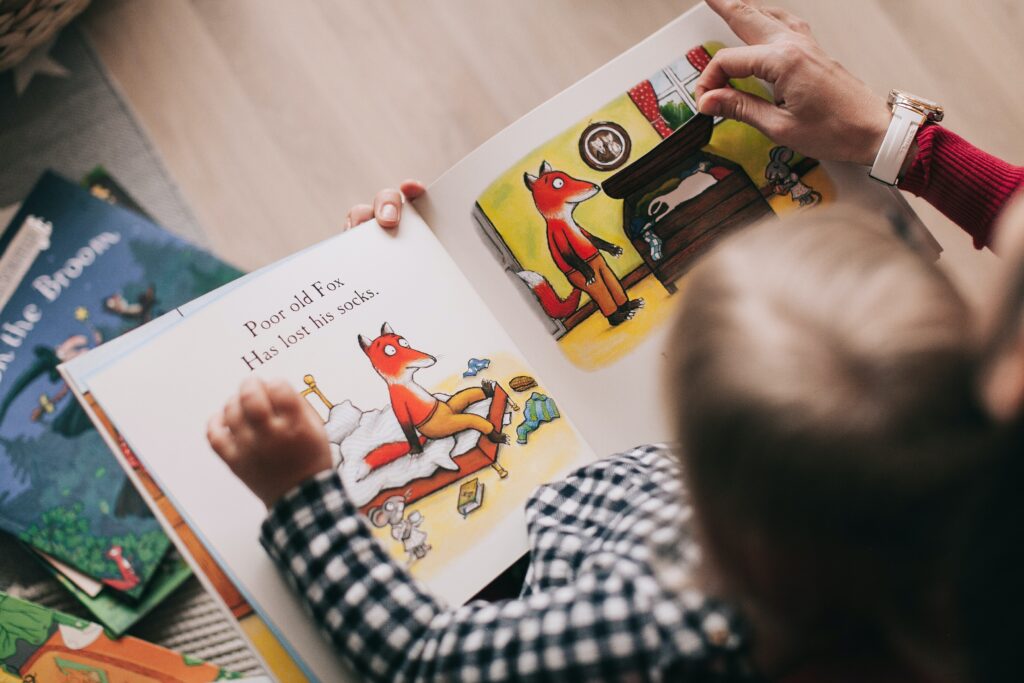This post contains affiliate links and we may earn a commission when you click on the links at no additional cost to you. As an Amazon Affiliate, we ear from qualifying purchases.
Our top picks for homeschool kindergarten reading curriculum:
- Hooked on Phonics – Learn to Read
- All About Reading
- Phonics Museum
- Primary Arts of Language: Reading
If you are homeschooling a kindergartener, you probably already know that reading is one of the most important skills you will ever teach your child. If you’ve been reading picture books to your child through their toddler and preschool years, they probably already understand more about reading than you realize! And if they already love books, they will surely be motivated to learn how to read themselves. In this article, we’ll tell you about some of our favorite homeschool reading curricula for kindergarteners. These curricula are also appropriate for preschoolers who are ready to learn to read, as well as older kids who are still trying to master the basics of reading.

Whichever program you choose, be sure to keep reading plenty of books out loud to your kids. This will maintain and develop the joy they find in reading, which is especially important during the process of actually learning to read, when reading can feel “hard”. (For more about why reading aloud is so important for kids, check out The Read-Aloud Family by Sarah Mackenzie).
Alongside a formal curriculum and lots of great read-aloud books, we recommend purchasing at least one set of good-quality readers that will help your kindergartener practice their skills at incrementally appropriate levels. Our favorite readers series are the Usborne First Reading Library, the Bob Books series, and the I Can Read series. And although we don’t recommend you use an app in place of a formal curriculum, there are great reading-oriented apps that can help support your child’s learning when used in moderation. We love the Reading Eggs app (and so do our kids!).
To learn more about our favorite homeschool reading programs for kindergarten, keep reading!
Hooked on Phonics – Learn to Read
If you’re looking for a solid phonics program that incorporates visual and auditory learning methods, consider the Learn to Read series by Hooked on Phonics. Divided into 8 levels, this program begins with the most basic fundamentals of learning to read (letter sound and recognition) and incrementally progresses until students master basic reading skills. The program includes both physical materials (workbooks, flashcards, reward stickers) and DVDs, which provide lesson introductions and music videos that help kids remember the skills they are learning.
If your student is just beginning to learn reading fundamentals such as letter recognition, you may want to start with Levels 1 and 2, which teach important pre-reading skills. If your child already recognizes letters and understands basic letter sounds, you can probably begin with Hooked on Phonics Learn to Read Level 3.
Hooked on Phonics also offers a fabulous app-based subscription program! This program includes paper materials as well that are sent to the home, so this is a great option if you’re looking to combine traditional paper-based learning with online instruction. For more about Hooked on Phonics’ online program, click here!
All About Reading
If you are looking for an effective, fun, and easy-to-follow reading program, consider All About Reading. This is one of the most popular reading programs among homeschoolers, and for good reason! The program is multisensory in its approach, combining sight, sound, and touch to help kids retain what they are learning. The lessons are short (about 20 minutes per day), carefully structured, and easy for parents to follow. Plenty of colorful activities and games are included to make lessons fun.
All About Reading provides multiple program levels, including a pre-reading level, so we recommend taking the placement test on their website to determine where your child should begin.
Phonics Museum
Published by Veritas Press, a leader in classical-style homeschool curricula, Phonics Museum is an excellent, thorough program that will teach your child the fundamentals of phonics in a fun and easy-to-follow way. The program gets its name from its art museum theme, which provides a fun and engaging framework through which reading skills are taught. Lessons are short and varied, providing students with practice in penmanship as well as reading skills. They also incorporate art activities, games, and music for a dynamic learning experience.
To begin this program, you’ll want to purchase the Phonics Museum Complete Kindergarten Kit, which includes the teacher’s manual, the student workbook, 10 primer readers, the pop-up museum, game cards and pieces, the fine art alphabet flashcards, alphabet playing cards, and fine art cards. Students who complete the kindergarten level may progress to the Phonics Museum Grade 1 program.
Primary Arts of Language: Reading
If you are looking for a kindergarten reading program that is interactive and incorporates poetry and stories, consider Primary Arts of Language: Reading by the Institute for Excellence in Writing (IEW). This curriculum is structured quite differently from most other reading programs: each lesson is based around a poem, and students learn vowels, consonants, and letter combinations together, while more phonics rules are added in various lessons. Wonderful poetry selections are used as the introduction and basis for each lesson; games, activities, DVD lessons, and plenty of reading practice are also incorporated. Students will be able to advance in their reading quickly with this curriculum.
To begin this program, you’ll need to purchase the Primary Arts of Language: Reading Complete Package. If you’d like your child to learn fundamental writing skills in combination with reading, consider purchasing the Primary Arts of Language Reading-Writing Premier Package.
Conclusion
If you are homeschooling a kindergartener, you have many great options to choose from when it comes to reading curriculum. Be sure to also purchase a set of high-quality readers (we love these) so your child can get lots of practice, and don’t forget to keep reading aloud!
